The old town from the 9th century hosts a prestigious university, the oldest in the country of Great Britain. It is the only town in Oxfordshire, the county of the South East of England. For centuries, Oxford has been a serious rival to Cambridge's academic status
Oxford has a history dedicated to royalty, not just important to scholars. The Anglo-Saxons settled by building a network of fortresses.
The University of Oxford began to flourish in the late 12th century. Although the basic date is unknown, the first doctrine was proved in 1096.
Known as the City of Dreaming Spiers, Oxford is today a bustling cosmopolitan city. Oxford is a cozy home to many tourist attractions, colleges and museums.
Located at the junction of the River Thames and the River Cherwell, there was a picturesque reason for the name itself. Oxford literally means "the shallow of the ox crosses a river".
Oxford's Early History - The Middle Ages
Among the fortified cities of England, Oxford played a strategic role. The king of the West Saxons, Alfred the Great, is deserving of such a situation in the 9th century.
Oxnaford was the early name of Old English. In Oxford, the Thames divides into many channels, offering the perfect place to move cattle.
Oxford developed in the 11th century at the crossroads of a market town and a military site between the kingdoms of Mercia and Wessex.
After experiencing the Danish attack, Oxford became a place for massacres of Danes. Denmark's intention was to gain England's throne.
During the Norman Conquest in 1066, Oxford was severely damaged. The construction of Oxford Castle in 1972 was a direct consequence. During anarchy, Queen Mathilda was imprisoned there.
The city of production became known for clothing and leather popularized bakers, tailors and showmakers in the 14th and 15th centuries.
Oxford Castle
Oxford Castle is a large, partially destroyed medieval castle that tells many stories. The prison, sheltered inside, is a special attraction that today serves as a hotel.
The Norman baron Robert D'Oyly is credited with building a castle, which helped him dominate the city. Stone building at the end of the 12th century replaced the first earthworks mound. St. George Chappel, built in 1074, was a seed for the future Oxford University.
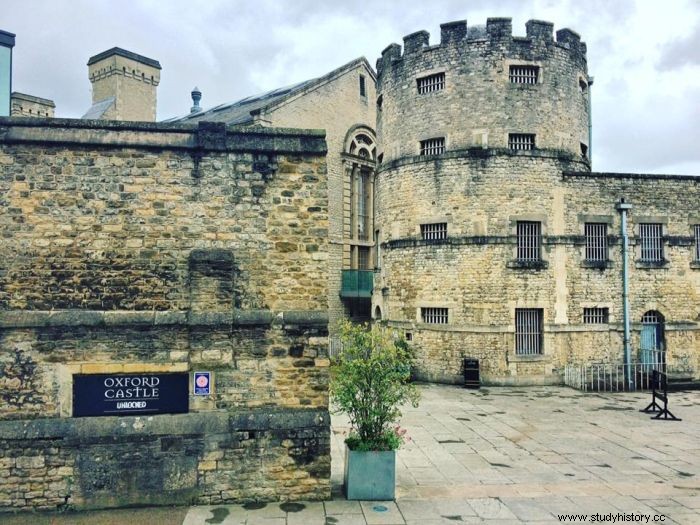
The English Civil War brought destruction to the castle in the 18th century, after which a new prison was built.
Queen Maud took refuge in the castle during 1142. It represented a dramatic time in the Civil War between King Stephen and Queen Maud.
From the St. George Tower, visitors can enjoy the magnificent sprouts.
Why is Oxford called the City of Dreaming Spiers?
Dreaming Spiers is a term that derives traces from the poem Thyrsism (1866) by Matthew Arnold. This tempting title Oxford owes its magnificent architecture.
The university buildings create the sky full of wonders with its medieval design. "The sweet city with its dream spiers," says Matthew Arnold, capturing the coziness and allure of Oxford.
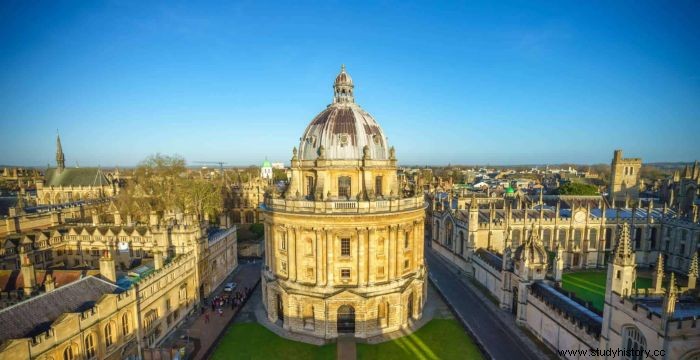
The poem is quite long, since it seems that 1863 words are not enough to describe the beauty of Oxford. The poem is actually about his friend Arthur Clough and how they explored the landscape of Oxford as students. Thyrsis is a shepherd poet from ancient Griece who describes Arthur Clough.
The fairytale images of Oxford are the atmosphere of many movies, series and movies.
Who was a typical student at Oxford in the Middle Ages?
Although it does not have a strict founding date, the University of Oxford operates very firmly in the 14th century. All students at the university were men, as women were not allowed to study until 1920.
Only baptized Christians were allowed to go to university. Clerks who served the Christian Church represented the majority of the students.
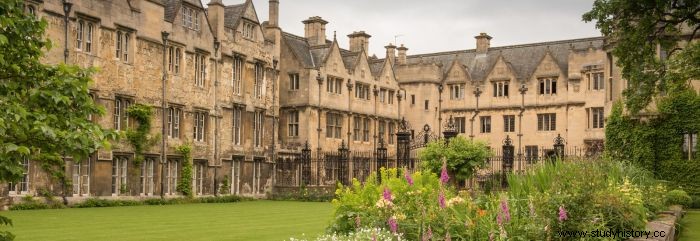
At the age of 16, students could enroll at the University. It is quite different from the University of Toulouse, where the age limit is 10 years.
Medieval students could go to several universities across Europe to ensure the best education. The middle class was most often the social background of the students. Latin was the official language of the university.
Oxford in the 16th Century
Although not prosperous, Oxford was one of the largest English cities in the 16th century. Oxford adorned the city as a city in 1542.
The university shone on all aspects of city life. Economic development was dependent on the university with a view to the large student market. It included not only educational items, but beer, food, clothing and other items.
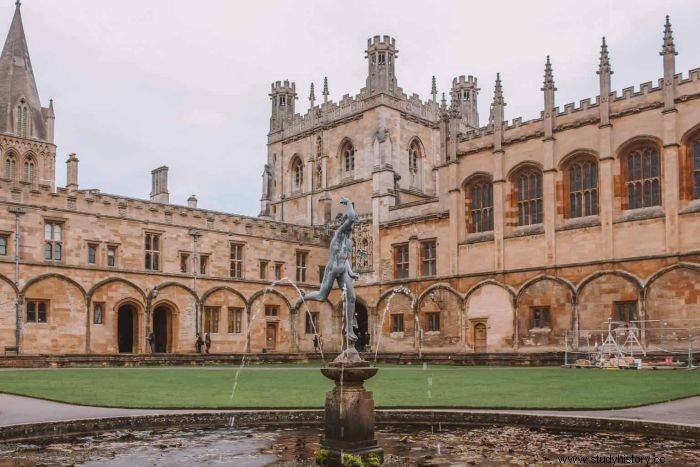
The plague had devastating consequences, like all cities at that time.
The profound social and religious change affected monasteries and monasteries that were closed. Although they disappeared slowly, Oxford got a bishop in 1542. The new urban society replaces the old medieval standards.
The city got a more elegant look with the growing importance of the university.
Civil War in the 17th Century
A civil war between the king and parliament began in 1642, best known between the Roundheads and Cavaliers. Freedom of religion and the rule of England were the main issues.
The parliamentary victory at the Battle of Worcester marked the end of the war in 1651. Commonwealth England replaced the English Empire. In other words - the republic was born.
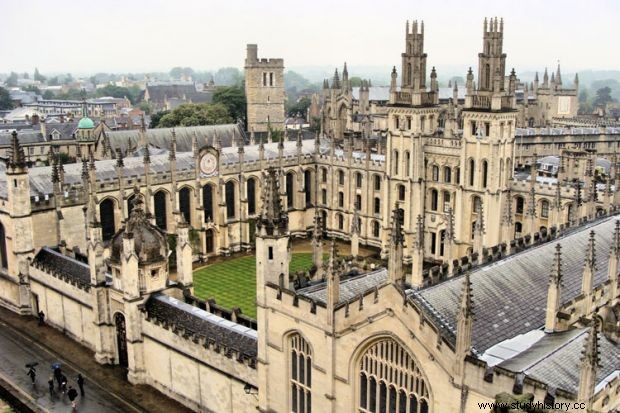
The new drink came in the 17th century. It was coffee that offered a relaxing moment in newly opened coffee houses. Oxford became a pleasant city in the alluring world of architectural wonders.
Student cases caused many riots in the 17th century, including the first in 1658 meant a conflict with the mayor.
There was a time when architecture shone in the new light, which resulted in new elegant buildings.
The significance of the market town in the 18th century
A small market town in the 18th century turned the focus around the university. Crafts filled the streets that led Oxford into the new realms.
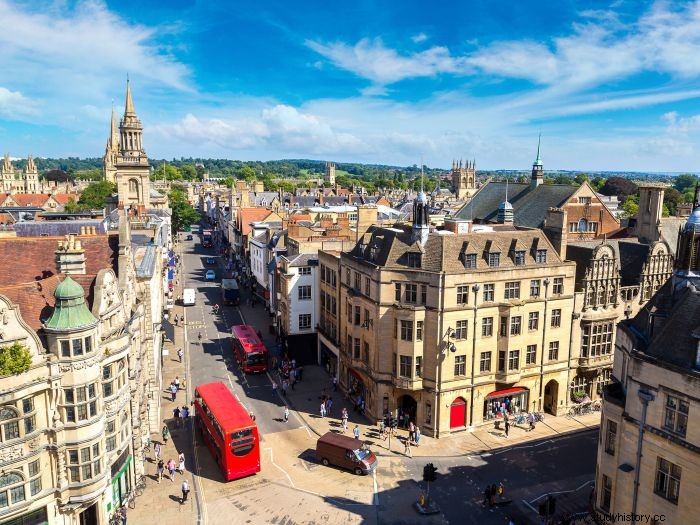
Bluecoat School was a boys' charity school that opened its doors in 1708.
Market days included a lot of traffic which led to the construction of a covered market in 1774.
Into the network of new constructions falls the new road in 1776, the Magdalen Bridge in 1779, a canal connecting the towns of Hawkesbury and Coventry.
Although log houses prevailed, one of the most outstanding stone houses was built in 1702. St. Giles' House in the 19th century served as the judge's residence and is today part of St. John's College.
The 18th century brought a new design to central Oxford, involving Radcliffe Square framed by the university buildings.
The modern development of the 19th and 20th centuries
The Local Government Act of 1835 brought further expansion of Oxford to the suburbs. In 1890, Oxford became a county council, signaling a more independent entity.
Lifestyle improvements included the construction of new hospitals, street lighting and modern sewer systems. Cholera epidemics brought a new danger, even three times during the 19th century.
One of the most important structures appeared with a new railway from Oxford to London in 1844.
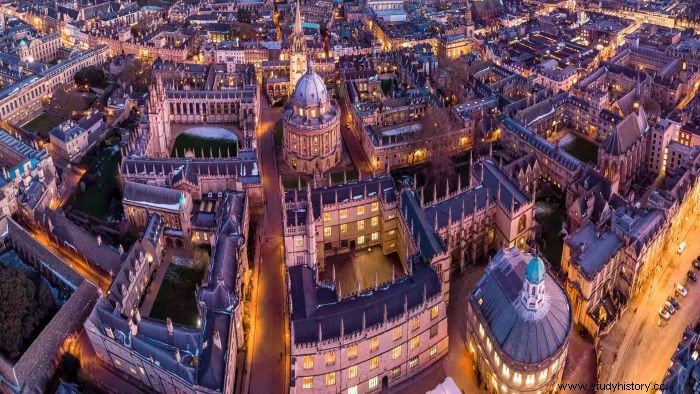
The craft has flourished and the most prosperous were the jam industry and the publishing industry. The university still had a leading role, not production.
Several working class houses were built in the suburbs of Oxford, such as Summerstown and Jericho.
In the 1920s, Oxford became an important city of production. The first cinema appeared in Oxford in 1910. Several new hospitals, museums and gardens affected further development.
Today, Oxford has 154,000 inhabitants with car production as its main industry.
University of Oxford
The traces of the oldest university in the English-speaking world lead to the early 12th century. Teaching may have started as early as 1096, although the clear signs of establishment are not certain.
By taking a model of the University of Paris, most students come from here. That was the reason for the rapid growth in the 12th century. In fact, it was King Henry II who banned English students from the University of Paris.

Theology, law, medicine and liberal arts cover the panorama of the first faculties. Developing without buildings shows the power of the university. Leased halls and churches have replaced this shortage.
Geographical origins divided the students between north (north of the river Trent) and south. The oldest colleges are Balliol and Merton, established between 1249 and 1269.
In the 14th century, the university received much praise from pops, kings and sages.
How the university works
Oxford consists of 38 colleges, each with its own rules, but under the university's crown. The main campus does not exist, the college and other facilities are scattered around the city.
The largest Oxford college is Christ Church, which is also the cathedral seat of Oxford. Bodleian Library has a special role as one of the oldest libraries in the United Kingdom. The treasure covers the exquisite site of oriental manuscripts, English literature and local history.
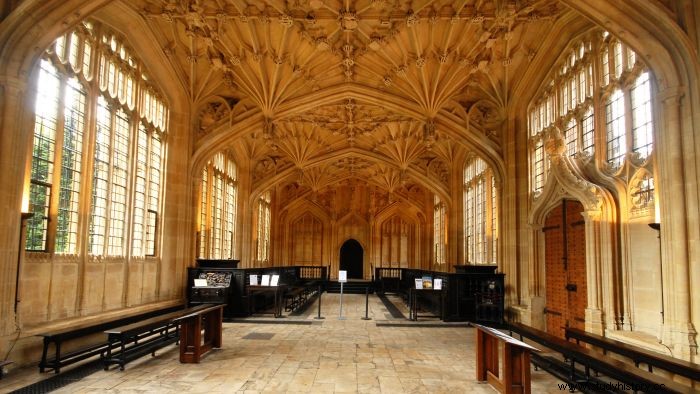
The oldest natural history museum in Britain shines at the Ashmolean Museum of Art and Archeology. Among the four museums in Oxford is one of the largest of recent date - the Museum of History and Science from 1924.
The Pitt Rivers Museum, dedicated to anthropology and archeology, is one of the most famous of its kind.
Today, most colleges are open to the public. Under the university's crown are the exquisite buildings:Radcliffe Camera, Sheldonian Theater and Examination Schools.
The University's Modern Days
Modern Days enlightened the first Oxford College of Women, Lady Margaret Hall, which opened its doors in 1878. However, full membership of women began in 1920.
The first seeds of modern education include the more serious approach to science. New colleges took the face, including modern languages and economics. Postgraduate studies are gaining special popularity.
The palette of today's university mostly belongs to international students. More than 140 countries are included, taking on the surface China and the United States as the most popular. Voluntary measures color society life at the university. Knowledge has become much more accessible, and gives a shine to modern problems for one of the best universities to study abroad.
The most important tourist destinations
The dreamy spiers of Oxford entice with the beauty that this city lives. It is the architecture, the history and the oldest university that give the convincing charm. Carfax Tower grabs four main streets at one point while stunning views erupt from the Carfax Tower.
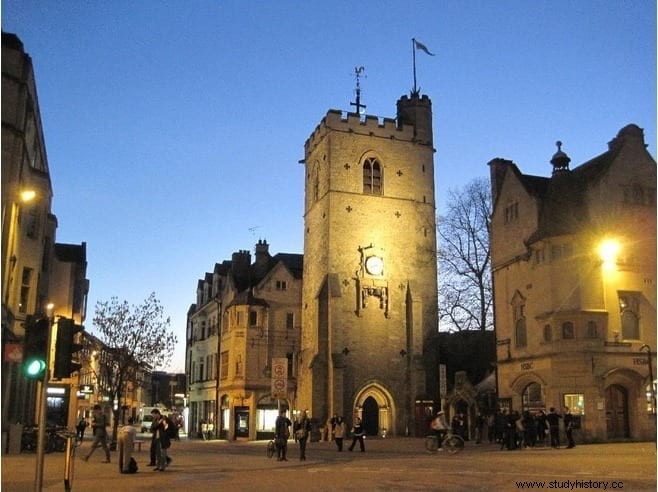
The poetic soul of Oxford touches the most hidden corners of this charming city. The inspiring cobbled streets have the vibe of the Harry Potter scenes.
Every college deserves special attention, but the most impressive is definitely Christ Church College. This magnificent building once served as a royal parliament for King Charles, and has a unique purpose. This is where Harry Potter was filmed.
Magdalen College touches on the quiet moments in the deer park that surrounds the buildings. Kebble College lights up the imagination intertwined with its soft colors.
Sheldonian Theater is a place to celebrate confirmations and enjoy many concerts.
Radcliffe Camera and Bodleian Library
One of the most iconic places in Oxford houses the rich treasure of the Bodleian Library. It is also one of the oldest round libraries in England. This is one of the most photographed places in the city, surrounded by the magnificent university buildings.
This place takes its roots in 1737 and has a copy of every book published in Britain.
The ceiling patterns capture the beautiful art of the Divine School next to the Bodleian Library.
Parks and green spaces
Oxford enjoys the relaxing charm of its green spaces. The charming architecture enjoys the many elegant parks.
Christ Church Meadow follows the rivers Isis and Cherwell, making it an idyllic location. If you have a boat trip or a picnic, this is an oasis in the medieval treasure.
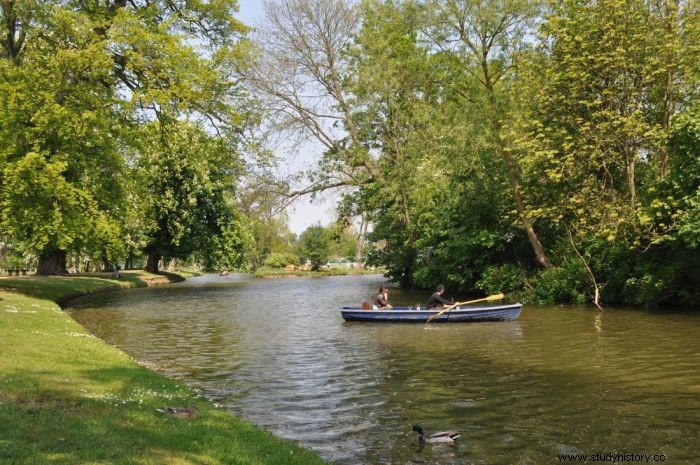
Oxford Botanical Gardens from 1621 is one of the oldest in Britain. The tropical beauty bursts in the center of Oxford and offers educational pleasure. It's a chance to smell the roses and enjoy the greenhouses.
Port Meadow shines on the north bank of the Thames. The cows and horses smile at the calm as well as the peacocks in the pub's gardens.
The university parks offer many hiking trails close to the Cherwell River. They even absorb the glow of the countryside along the way.
Conclusion - Oxford's history
The alluring architecture is intertwined with the prestigious status of Oxford. The network of colleges hides the charm of this unique city. Oxford touches on the adventure atmosphere with its parks and lots of greenery.
From the Bodleian Library and the Ashmolean Museum, Oxford's tempting splendor passes the iconic colleges. The Bridge of Sights doubles the charm, actually called the Hertford Bridge.
Capturing the view from above is one of the joys of every city. The top of the University Church of St. Mary the Virgin provides the perfect opportunity.
The pedestrian streets of Oxford are wonderful images of history and opportunities. Even the rivalry with Cambridge opens the doors to Oxford's stunning charm.
